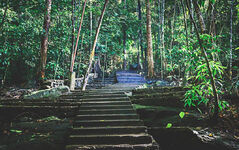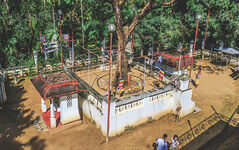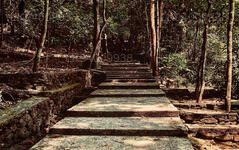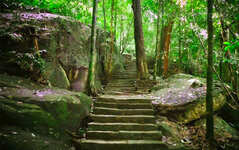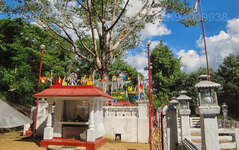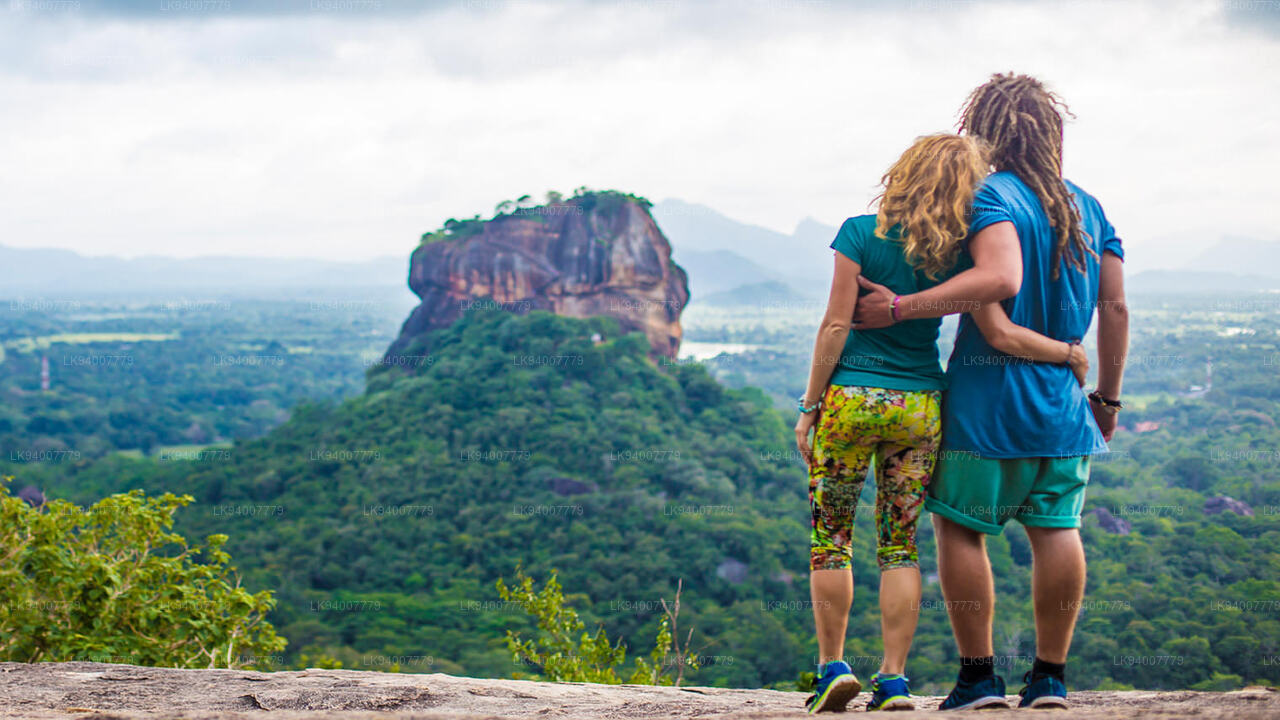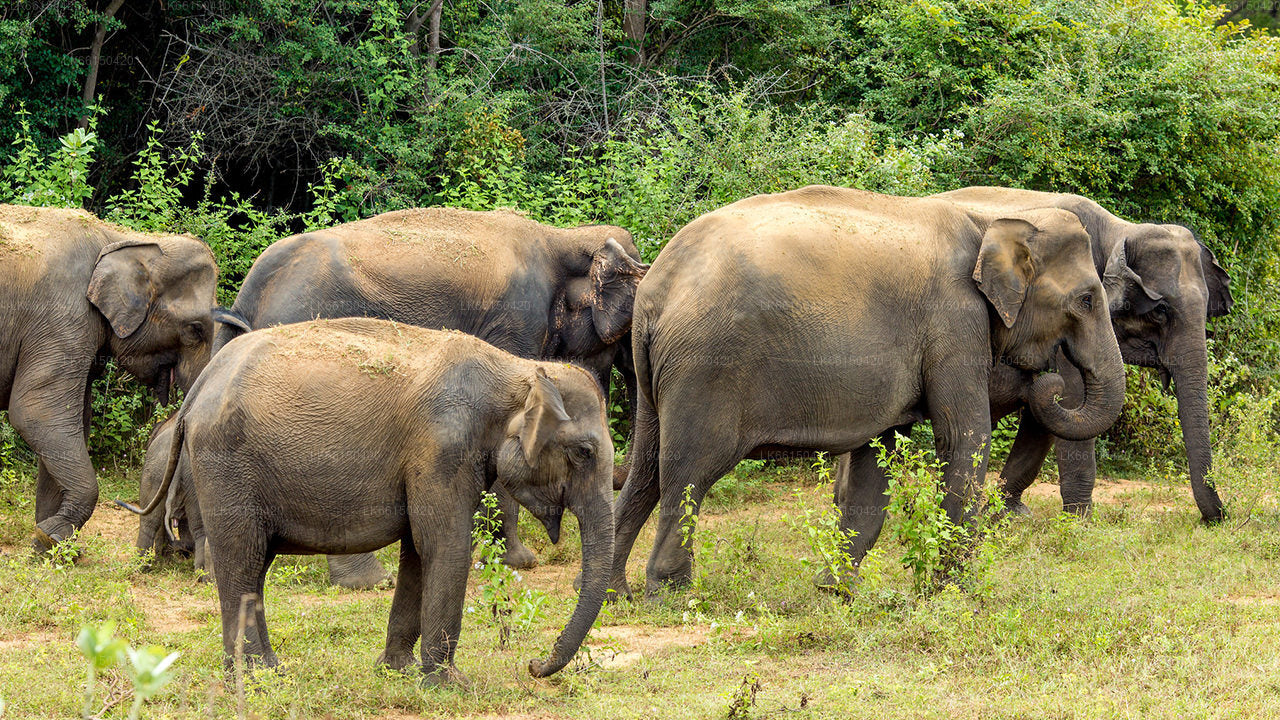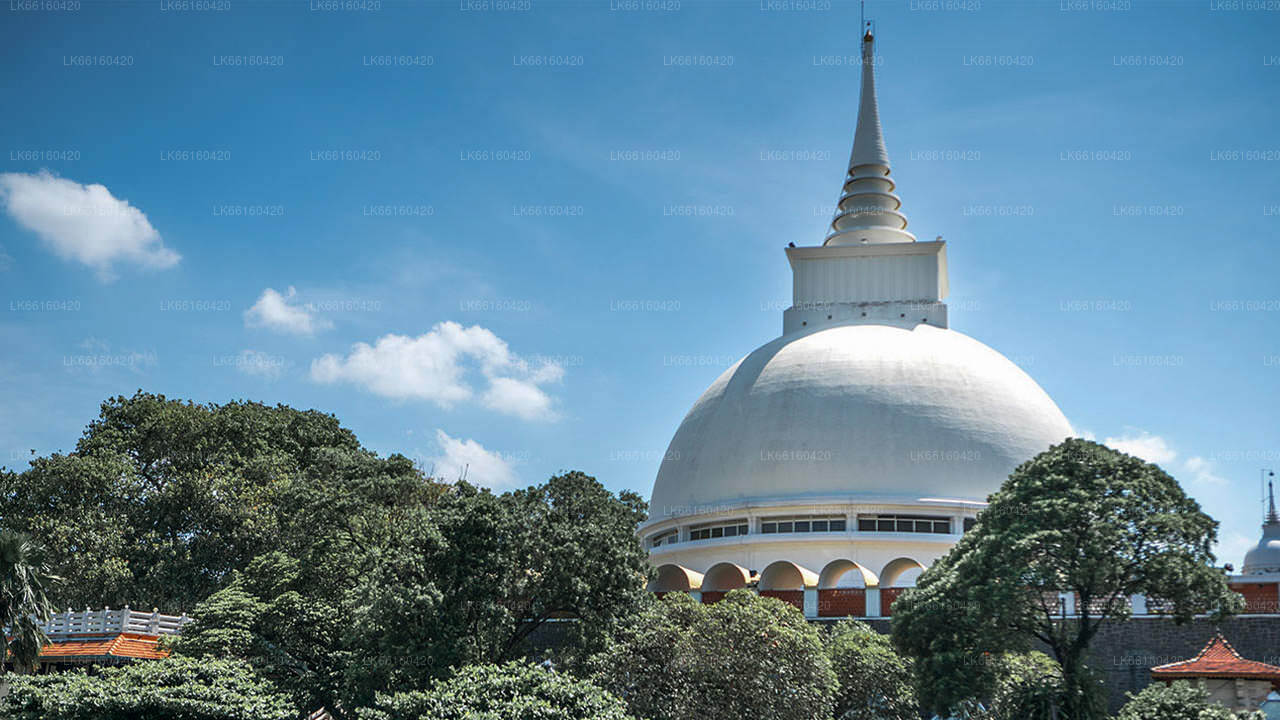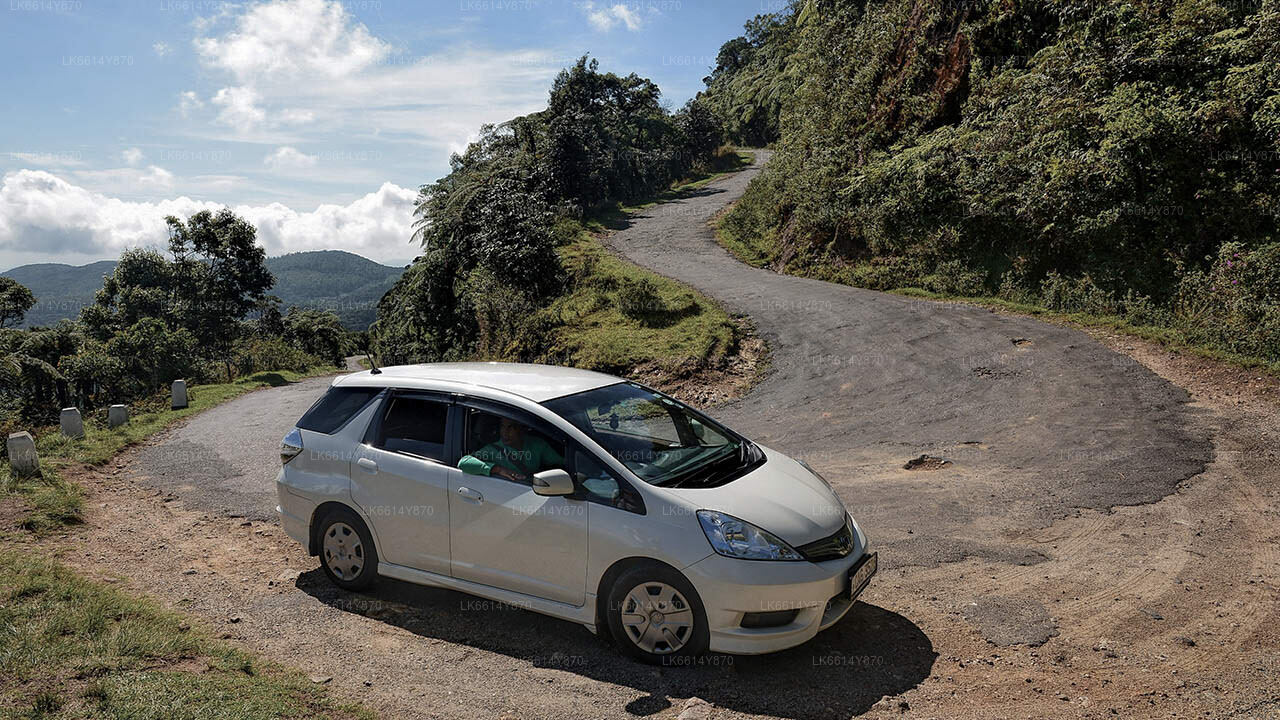
Kalutara-stad
Kalutara is een kuststad in het westen van Sri Lanka, bekend om zijn serene stranden en historische bezienswaardigheden. De iconische Kalutara Bodhiya, een heilige boeddhistische stoepa, en het Richmond Castle, een koloniaal landhuis, zijn prominente trekpleisters. De stad combineert culturele rijkdom met natuurlijke schoonheid.
Bodhinagala Forest Hermitage
Bodhinagala Forest Hermitage in Sri Lanka: A Place of Serenity
The hermitage in Dombagaskanda also known as the Bodhinagala Forest Hermitage in Sri Lanka, nestling on the bank of the Kalu Ganga near the Dombagaskanda hill in the outskirts of Ingiriya in the Kalutara district, lies beneath the leafy canopy of a wet zone rain forest reservation of some 347 hectares. The natural rain forest shields the hermitage from the hustle and bustle of the outside world, providing a serene environment for the meditating monks.
To reach the Bodhinagala forest hermitage, one has to travel on the Panadura-Ratnapura (A-8) highway and travel 1.5 km along the minor road which leads to the Kalu Ganga. Before coming to the river, the road branches off to the left and continues for another 1.1 km, and comes to an area where it reaches the foot of Dombagaskanda. Although the road up the hill is accessible by vehicle, it’s better to get off one’s vehicle at this point and walk through the forest.
Positioned at the heart of the forest is a hermitage which has been there from way back in time, from the early 1950s. This is the closest tropical rain forest that can be reached from the main city of Colombo. The Bodhinagala Forest is conserved for this very reason and was once 407 hectares of pristine jungle.
An amazing patch of wilderness complete with gentle slopes, crafting ridges and peaks, with the highest peak rising to 186 meters above mean sea level, the forest reserve is bordered by the Kalu river from the south, Ingiriya Ela from the east, paddy fields from the north and the road leading from the main road to the Bodhinagala Monastery from the west.
Bodhinagala Forest Hermitage in Sri Lanka: The surrounding Wildlife
Just walking down the main trail gives any visitor an idea of the rich biodiversity that’s trapped in this heaven. An endemic Grey Hornbill or two greeting you at the entrance is but a common encounter here. From the familiar high pitched whistle of the Hill Mynahs, and the Rose Ringed Parakeets, to the chirpy
chit chats of the colorful little Hanging Parakeet, to an endless chirping of the crickets, with the company of a leech or two, all become part of an experience in the tropical jungles of Sri Lanka. Activities of the vibrant plumed Black Naped Monarch, Tickles Blue Flycatchers, and the flocks of Scaly
Breasted Munias keep the forest alive.
Other birds that could be heard included Yellow-browed Bulbul, Green Imperial-pigeon, Oriental Dwarf Kingfisher, etc. Both the endemic Toque and Purple-faced Leaf Monkeys could also be seen.
Bodhinagala Forest Hermitage in Sri Lanka: The History
The history of the Bodhinagala Forest Hermitage in Sri Lanka goes back to the early 1950s. Ven. Olaboduwe Sri Revatha Dhamma Kitti Thera, the principal of the Dharmadeepa Vipassana Piriwana in Kaluwamodara in Aluthgama was the founder of the hermitage. He came to Ingiriya to observe Vas on
the invitation of devotees in the Raigam Korale.
He stayed in a makeshift hut at a cemetery close to the Ingiriya hospital with seven bhikkhus. More people thronged Ingiriya to listen to the Dhamma Desana and meditation practices conducted by the Ven. Thera. After the Vas season was over, the bhikkhus prepared to go back, but the devotees persuaded them to stay permanently.
Ven. Olaboduwe Sri Revatha Thera, with the help of a few villagers, visited the thick forest of Dombagaskanda and at first, sight realized it was ideal for a forest hermitage. The villagers and devotees in the Raigam Korale have constructed the Kurtis and other buildings in the Dombagaskanda forest and on June 4, 1955, the complete hermitage of Bodhinagala was offered to the Sangha.
In the beginning, 12 bhikkhus lived in the small Kuti in five acres of forest. Later, it was expanded to 50 acres during the time of the late M.D.H. Jayawardena, the then MP for Horana. Today, this hermitage has numerous constructions including Kuti, meditative pathways, and medical halls, linked together and developed as a reputed forest hermitage in the country.
Bodhinagala Forest Hermitage in Sri Lanka: Features of the Hermitage
An interesting feature about the monastery is the Gaudiya, the short tree trunk is used as a bell. When beaten with a stick, it emanates a large sound. It’s hung on a tree and is sounded around 10.00 am every day to call the monks of the hermitage to the main Dana Salawa from where they go on Pindapatha.
While about 12 bhikkhus permanently reside at the hermitages, foreign bhikkhus also come for short periods to practice meditation. They live and meditate in the small Kuti in the hermitage, having left all their wealth and loved ones. To avoid disturbing the bhikkhus, visitors are allowed into the area of the
Kuti only from 12 noon to 1.00 pm.
Under the guidance of the Viharadhipathi, the Bodhinagala Forest Hermitage Trust has undertaken the construction of a Chaitya to fill a long-standing need. Construction has already begun with the assistance of devotees and philanthropists. The project is estimated to cost Rs. 8.5 million.
Over het district Kalutara
Kalutara ligt ongeveer 42 km ten zuiden van Colombo. Kalutara was ooit een handelspost voor specerijen en werd afwisselend bestuurd door de Portugezen, Nederlanders en Britten. De stad staat bekend om de hoogwaardige bamboemanden en -matten en de heerlijkste mangosteens.
De 38 meter lange Kalutarabrug werd gebouwd bij de monding van de rivier de Kalu Ganga en vormt een belangrijke verbinding tussen de westelijke en zuidelijke grens van het land. Aan het zuidelijke uiteinde van de brug ligt de drie verdiepingen hoge Kalutara Vihara, een boeddhistische tempel uit de jaren 60 die de eer heeft de enige holle stoepa ter wereld te zijn.
Over de Westelijke Provincie
De Westelijke Provincie is de dichtstbevolkte provincie van Sri Lanka. Het is de thuisbasis van de wetgevende hoofdstad Sri Jayawardenapura en van Colombo, het administratieve en zakelijke centrum van het land. De Westelijke Provincie is verdeeld in 3 hoofddistricten genaamd Colombo (642 km²), Gampaha (1.386,6 km²) en Kalutara (1.606 km²) districten. Als het economische centrum van Sri Lanka hebben alle grote lokale en internationale bedrijven hun aanwezigheid in de stad, evenals alle grote designer- en winkelketens, dus wees klaar om te genieten van wat winkeltherapie in de westelijke provincie.
Met de hoogste bevolking van alle provincies, bevinden bijna alle belangrijke onderwijsinstellingen op het eiland zich in de westelijke provincie. Universiteiten in de provincie zijn onder andere de Universiteit van Colombo, de Universiteit van Sri Jayewardenepura, de Universiteit van Kelaniya, de Open Universiteit, Sri Lanka, de Boeddhistische en Pali Universiteit van Sri Lanka, de General Sir John Kotelawala Defence University en de Universiteit van Moratuwa. De westelijke provincie heeft het grootste aantal scholen in het land, waaronder nationale, provinciale, particuliere en internationale scholen.

